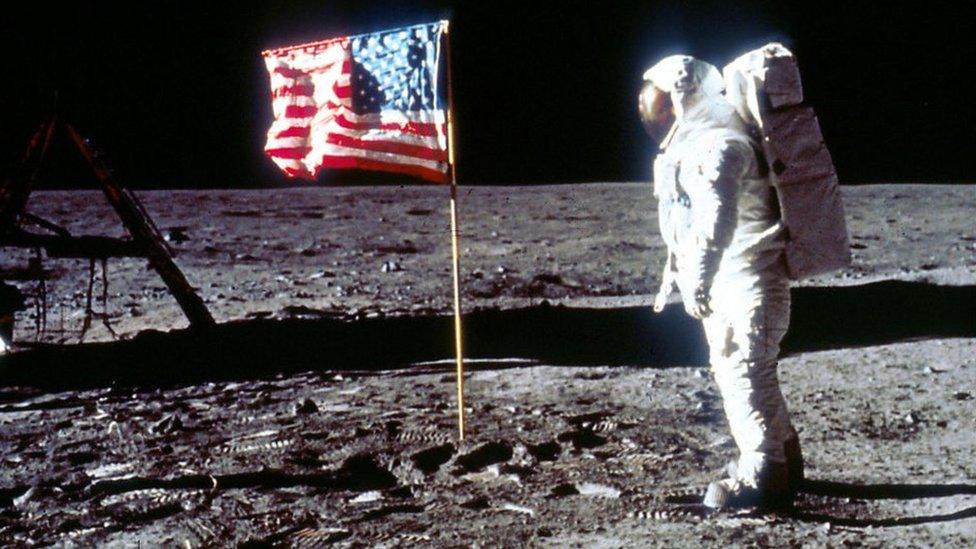What is a lunar eclipse and how can you see it?
- Published
- comments
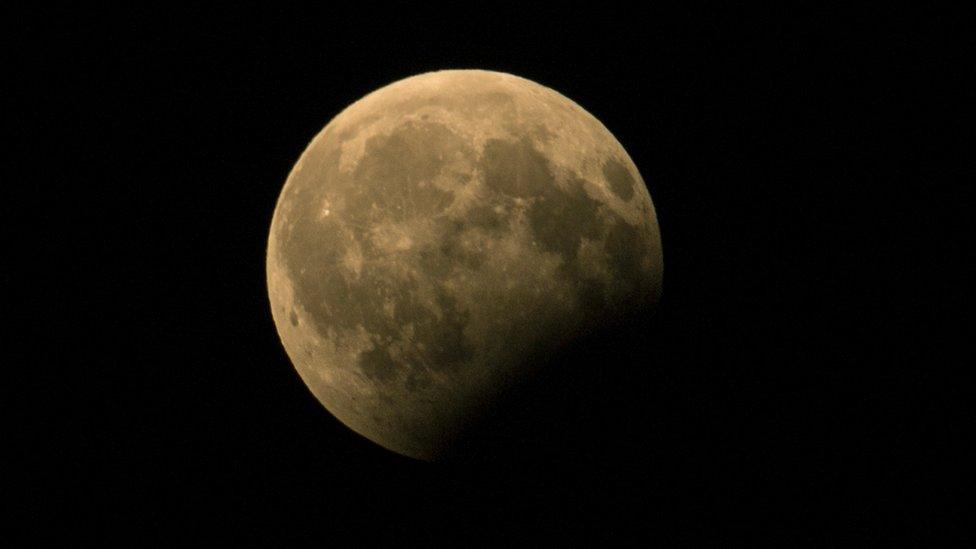
Astronomers say much of the moon will appear rusty red or a dark grey to observers on Tuesday evening
A partial lunar eclipse could be visible from the UK on Tuesday 16 July.
Up to 60% of the Moon's surface will appear red or dark grey at the height of the eclipse.
Some of the eclipse will be seen over parts of Europe, Asia, Australia, Africa, select parts of North America, South America and Antarctica.
What is a lunar eclipse?
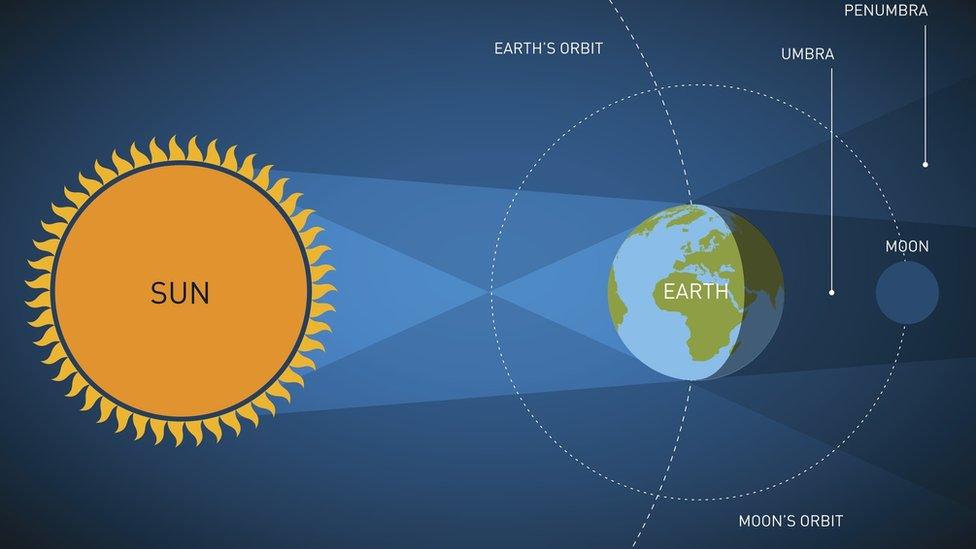
An eclipse of the Moon occurs when the Earth lies directly between the Sun and the Moon and the Moon lies in the shadow of the Earth.
For a total lunar eclipse to happen, all three are in a straight line. This means that the Moon passes through the darkest part of the Earth's shadow.
A full lunar eclipse is often called a blood moon because the Moon becomes a bright reddish colour.
A partial lunar eclipse is when part of the Moon travels through the Earth's full 'umbral' shadow. Only part of the Moon's visible surface moves into the dark part of the Earth's shadow.
We will only see a little over 60% of the surface of the Moon pass through Earth's full shadow and appear red. The other part of the Moon will still appear silvery grey because sunlight is still reflecting off that part of the Moon.
A lunar eclipse happens between two to five times a year with a total lunar eclipse occurring at least two every three years.
When will you be able to see it?

In the UK, the eclipse will be visible from Moon rise at 9:06pm (16 July) to 1:17am (17 July).
The Royal Astronomical Society (RAS) says the best time to see the eclipse will be about 22:30 when more than half of the Moon's surface will appear red or dark grey.
The Moon leaves the darker shadow at midnight, and the eclipse ends when it exits the penumbra 79 minutes later.
In the UK, the Moon will be low throughout the eclipse, so watching it will need an unobstructed south-eastern and southern horizon. But unlike a solar eclipse, the eclipsed Moon is completely safe to look at so there is no need for special glasses.
Why is this partial eclipse special?
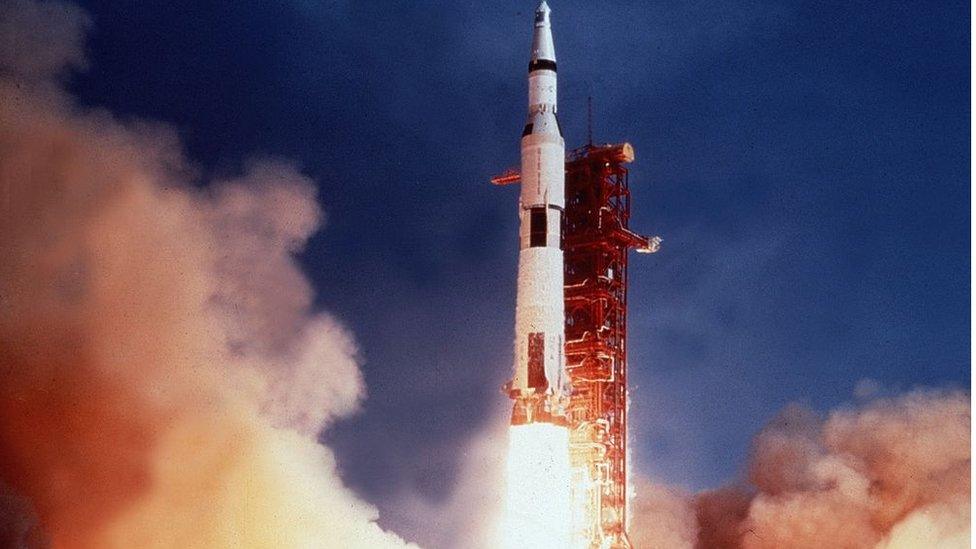
For stargazers having an eclipse on the 16 July 2019 is particularly special because it marks the 50th anniversary of the launch of Apollo 11, the US mission to put men on the Moon.
Apollo 11 blasted off from Florida on 16 July 1969.
Four days later US astronaut Neil Armstrong became the first man to step on to the Moon's surface.
- Published16 July 2019
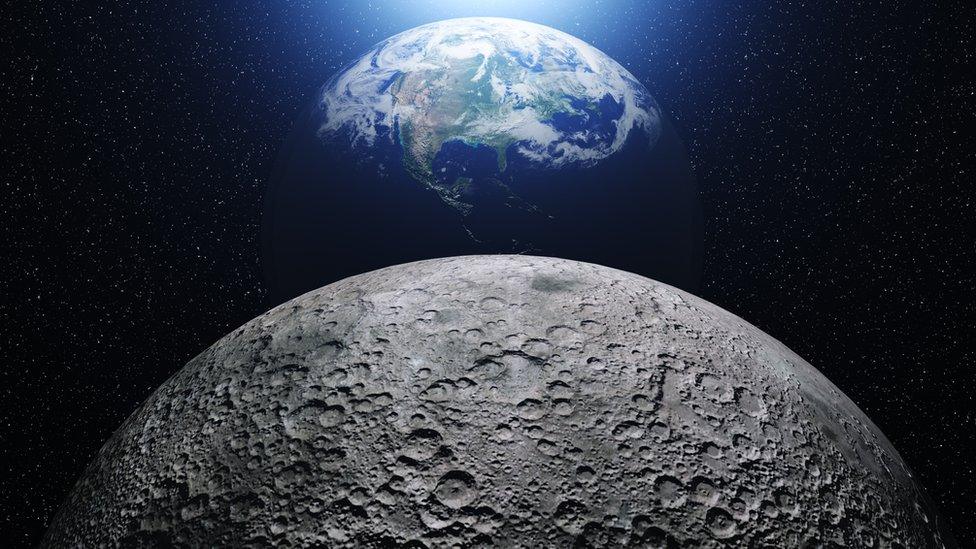
- Published28 July 2018
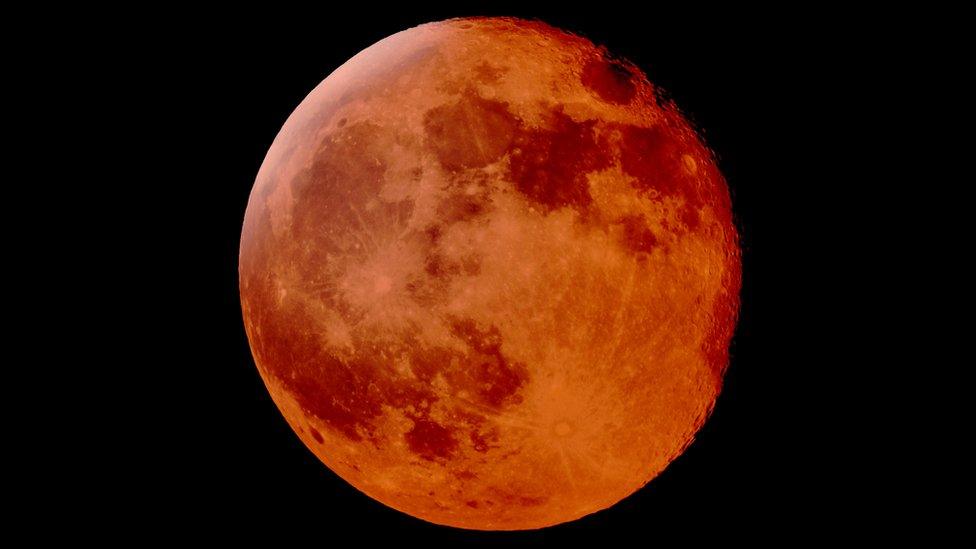
- Published16 July 2019
